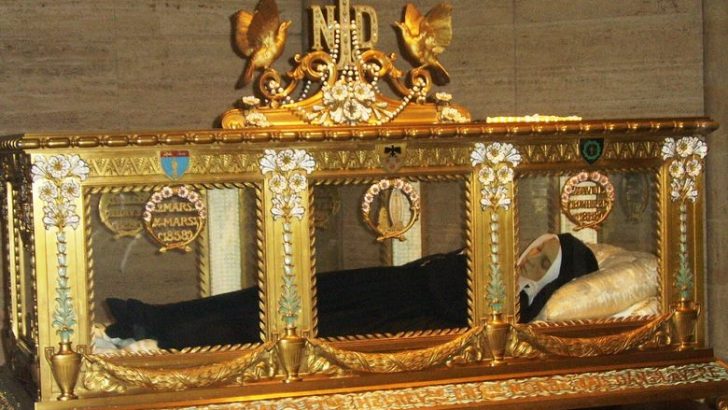Lourdes: 160 years of healing
Colm Fitzpatrick explores the short and remarkable life of St Bernadette
A quirky and curious pub question that may raise a few eyebrows is: “Who is the first saint to be photographed?” The answer, believe it or not, is St Bernadette Soubirous, the renowned visionary of Lourdes, whose picture was taken in 1860.
But behind this black and white photo lies a much more colourful story; one that describes the short life of a young poor French girl who encountered the Mother of God.
Born in Lourdes on January 7, 1844, Bernadette Soubrious was the first of nine children of François and Louise, a miller and his wife. Four of Bernadette’s siblings died in their infancy, while she herself contracted cholera and several other illnesses as a child, being left with serious asthma throughout her life.
As the industrial revolution took hold, her father was forced to rent a smaller mill, and eventually driven to become a labourer, while her mother worked as a cleaner and Bernadette stayed at home to look after her siblings.
Prison cell
By 1857, the family’s poverty had left them living rent-free in a single room that was once a prison cell deemed too unsanitary for even prisoners.
As a result of the family’s financial struggles and her frequent sickness, Bernadette missed the opportunity for a thorough education; largely unable to read or write, she knew only a little basic French – she spoke the local dialect Bigourdan – and could not attend Catechism classes so could not make her First Holy Communion with her peers.
By early 1858, however, she had begun preparations for her First Communion, and was attending as best she could a day school run by the Sisters of Charity and Christian Instruction from Nevers.
On February 11 she was tasked with collecting firewood with her sister Marie-Toinette and a friend, Jeanne, near the grotto of Massabielle. While the other two girls ran across the stream and past the grotto, she stayed behind to find a way across without getting her stockings wet. It was then that she glanced at the opening of the grotto and noticed “a dazzling light, and a white figure”. This was the first of 18 visions of a lady she initially referred to simply as Aquero – ‘It’.
After returning home and reluctantly telling her parents about the experience, her mother forbade her to return. Although an obedient child, the profundity of the apparition prompted her to go back again and again. During her third visit, the lady spoke to her and said to Bernadette, “she could not promise to make me happy in this world, only in the next”.
Visions
The visions continued for several weeks, attracting large crowds, much to the embarrassment of her parents. This period became known as “holy fortnight”, and throughout this duration the lady asked Bernadette to build a chapel in the vicinity, drink water from the stream and pray for the conversion of sinners.
On March 25, during the 16th visitation, she asked the lady her name and was greeted with a smile. She repeated the question three more times and finally heard the lady say, “I am the Immaculate Conception”. She saw the Blessed Virgin Mary two more times in 1858: on the Wednesday after Easter, and on the feast of Our Lady of Mount Carmel.
Although many of the townsfolk believed in her visions civil authorities tried to frighten her into retracting the accounts but she refused to retract her story. Church and civil officials rigorously interviewed her, but the accounts remained consistent.
After the Church authorities confirmed the authenticity of the apparitions in 1862, she returned to the hospice school where she had learned to read and write, primarily to remove from herself the unwanted attention she was receiving. On July 29 1866, with 42 other candidates, she took the religious habit of a postulant under the Mistress of Novices Sr Marie Therese Vauzou. The Mother Superior gave her the name Marie-Bernarde in honour of Bernadette’s godmother Bernarde, with whom Bernadette had stayed.
The drama of the apparitions and the attention they generated contrasted sharply with the quiet cloistered life Bernadette now chose to live, spending the rest of her years in the convent working as an infirmary assistant and later a sacristan.
During her time as a nun, she frequently suffered from ill health, but despite this adversity she never complained, and was renowned in the convent for humility and obedience.
Indeed, on one occasion a nun asked her if she had temptations of pride because she was favoured by the Blessed Mother. “How can I?” she answered quickly. “The Blessed Virgin chose me only because I was the most ignorant.”
She would refer to herself as the “stupid one” and often experienced feeling of unworthiness, although this only increased the magnitude of humility attributed to her.
On many occasions the Convent gave consent for senior clergy to meet and interview Bernadette. Although this was exhausting and repetitive, she answered the questions graciously.
The perennial infirmities that had overshadowed her since she was a child began to eventually take their toil, forcing her to remain bed-ridden for months at a time. It was discovered that she had contracted tuberculosis, and she eventually died of her long-term illness at the age of 35 in the Sainte Croix (Holy Cross) Infirmary of the Convent of Saint-Gildard on April 16, 1879.
Even on her deathbed Bernadette, while suffering intense pain, kept with the Virgin Mary’s admonition of “penance, penance, penance,” and proclaimed “all this is good for Heaven!” Her last words were: “Blessed Mary, Mother of God, pray for me. A poor sinner, a poor sinner.”
Sr Nathalie Portat was present during Bernadette’s last day and described how Bernadette was tortured by physical agony and asked for those nearby to pray for her soul.
Following her death, with the permission of civil authorities, her coffin was transferred to the crypt of St Joseph in the confines of the convent where she had spent her later years. She was exhumed numerous times following her death and it was noted that her body appeared to be incorrupt. This was one of the miracles later cited to support her canonisation.
In 1923 Pope Pius XI published a decree on the heroic nature of the virtues of the Venerable Sister Marie-Bernard Soubirous. It stated: “This life can be summed up in three sentences: Bernadette was faithful to her mission, she was humble in glory, she was valiant under trial.”
Beatified in 1925 and canonised in 1933, St Bernadette is the patroness of illness, poverty, Lourdes itself, shepherdesses and people ridiculed for their piety.
Her story is a touching one, which denotes the struggling life of an incredible woman, who in the face of suffering held on strongly to that dazzling light she had witnessed as a young girl.


 Colm Fitzpatrick
Colm Fitzpatrick The remains of St Bernadette Soubirous
The remains of St Bernadette Soubirous 